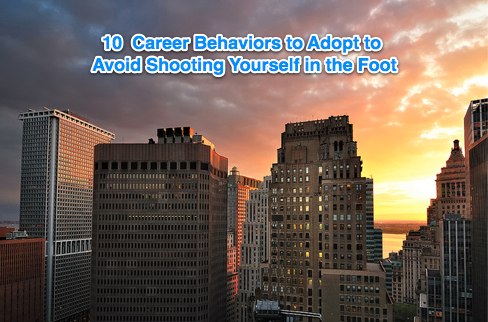 Recently I was fortunate to go to a Women in Technology event, which hosted guest speaker Nora Denzel. Nora Denzel has over twenty years tech experience having previously been a Senior VP for both HP and Intuit. Nora currently serves on three boards and has been named one of the top 25 women engineers (2012) by Business Insider, one of the top 20 CMOs by Exec Rank (2012), one of the Top 20 computer storage movers and shakers and a SJ Business Journal Woman of Vision. As a key speaker at the Women in Technology event she shared 10 things women do to shoot themselves in the foot when it comes to their careers. I related to many of Nora Denzel’s lessons of how to avoid these pitfalls and wanted to share them on my blog, for others to learn from.
Recently I was fortunate to go to a Women in Technology event, which hosted guest speaker Nora Denzel. Nora Denzel has over twenty years tech experience having previously been a Senior VP for both HP and Intuit. Nora currently serves on three boards and has been named one of the top 25 women engineers (2012) by Business Insider, one of the top 20 CMOs by Exec Rank (2012), one of the Top 20 computer storage movers and shakers and a SJ Business Journal Woman of Vision. As a key speaker at the Women in Technology event she shared 10 things women do to shoot themselves in the foot when it comes to their careers. I related to many of Nora Denzel’s lessons of how to avoid these pitfalls and wanted to share them on my blog, for others to learn from.
1. Control your career PR agent
Nora asserts that every statement we make at work is a press release. When someone compliments you for a great presentation, don’t fall into the trap of pointing out things that could have been done better, as to do so sends the press release “I’m not as competent as you thought”. A far better response when given a compliment is just to say thank you. If you still want to do a post-mortem of all your mistakes save it for a friend or family member or that unfortunate person stuck sitting next to you on a flight.
2. Feel comfortable being uncomfortable
If you have taken on a challenging new role it is normal to be uncomfortable and if you hope to have a challenging career you need to get used to it. A learning curve is at play here and you need to give yourself time to adjust. If after 6 months you still feel uncomfortable, reevaluate at that time if you are in the right position.
3. Learn how to act
No matter how scared you may feel, learn how to act confident to conquer your fears and appear competent to others. Nora once met NASA astronaut Sally Ride. Sally admitted to having being scared walking into the shuttle about to go into space, yet you would never have known this from watching Sally’s confident demeanor at the time.
4. Attitude is everything
Often we are told that a career path is linear, yet the reality is that career paths often resemble obstacle courses. Having a positive attitude is key to overcoming career challenges and soaring in the face of adversity.
5. Kill Miss Congeniality
At times in the workplace women may be selected for certain gender-specific tasks such as baking a birthday cake. Nora asserts that unless you enjoy such a task don’t take it on. If you do it once you’ll be expected to do it again. Miss Congeniality does not get the corner office.
6. Lighten up and separate
How someone behaves at work may not be a true reflection of who they are as a person. At work everyone plays their role, it’s not personal its just business. Learn to laugh things of and lighten up when you feel insulted.
7. Learn how to ask
Many opportunities are not advertised. Ask questions to achieve your goals. Want to go on an international assignment? Say so to your manager. That way if one were to open up your manager may suggest you, if they already know you’re interested. There is not always a sign up sheet to allow for the most qualified, most suited person to be fairly chosen, so be proactive.
8. Aim high
Where do you want to be ten years from now? Tell your manager(s) your big career goals, to foster a productive career discussion. People tend to be better editors than they are creators and can give you some great advice if you give them some ideas to work with.
9. Embrace criticism
Criticism can be hard to take, often resulting in defensive behaviors, as the recipient feels attacked. Feedback is actually very valuable and necessary in order to grow and develop. To get this feedback you need to view criticism as an area of opportunity. Thank the person giving it so they feel comfortable, then ask clarifying questions to encourage them to fully expand on their thoughts. To solicit feedback when it is not offered consider asking your manager a question such as “how does my performance differ from what is expected at the next level?”
10. Remember what you’re judged on
Results are ultimately what matters most, so always keep the end in mind.
To learn more about Nora Denzel I would actively recommend you visit her website.














